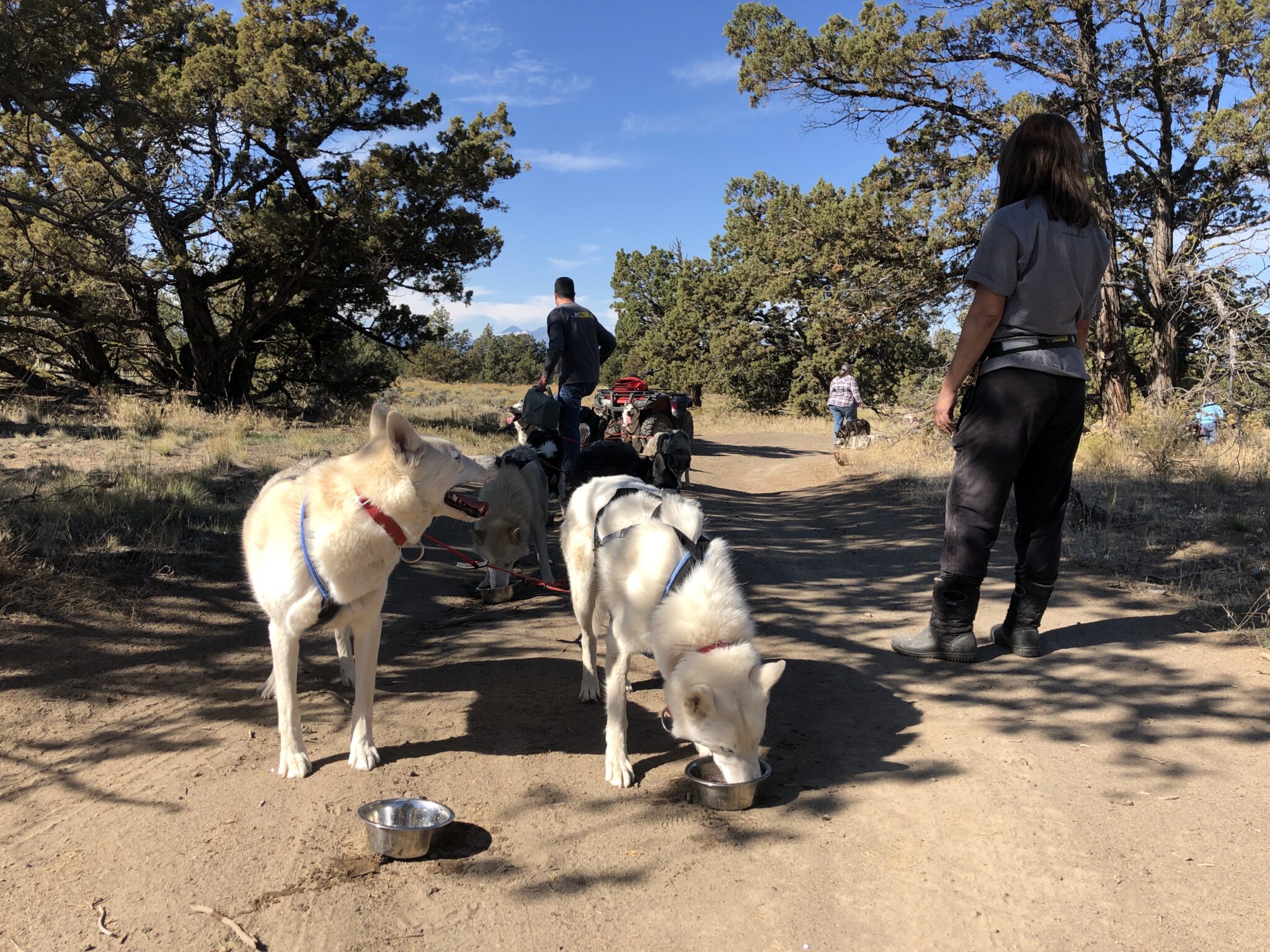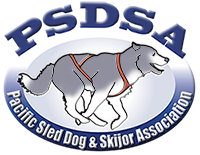WHERE WILL YOUR DOGS LIVE?
Your dogs can live in the house, if the other human residents agree. Most sled dogs like living outside. Each dog should have its own house and area.
You should never allow your dogs to run anywhere they please at any hour of the day or night. You have no control over what they are doing and you will not know if they are in trouble. If you think you can just open the door and let them run loose, you will find that very soon you don’t have any dogs.
If you plan to keep your dogs in a fenced kennel, check the style of fencing. Sled dogs are very good at digging and jumping. You may need to bury part of the fence underground or put concrete around the edge of the run to keep the dogs from digging out. The fence should be 6 feet tall to keep them from jumping over it.
Many mushers use a chain arrangement. You can get an old truck axle at a junk yard. In a hardware store or from a dog supply source, you can get a large heavy metal O ring, S hooks, chain and a swivel snap. To put it together, you need to connect the O ring to the chain with the S hook and hammer the S hook ends closed. Attach the swivel snap the same way at the other end. Put the axle through the O ring and pound it into the ground. The chain should be about 8 feet long and the dog must be able to reach his dog house. Dogs are sometimes staked close enough to play but not get their chains tangled. Many mushers say that the dogs learn not to tangle their sled lines easier if they are used to being chained up.
In some places, there may be laws about how to use chains or what size fences are allowed. You can call the Town or City Clerk to find out more information.
DOG HOUSES
Plan where to put the dog house. You will want to be able to see your dogs from the house. Think about which direction the cold winds and rain will come from and face the open side of the house away from that direction. Summer breezes and shade are good.
The ground should be flat. Do not pick an area that is often wet. It is best to have varied type of ground surface. You may want to put down a small concrete area, but too much concrete can make the dogs too hot in the summer. Some mushers put down gravel, but some dogs will eat gravel causing internal problems.
Any grassy surface will quickly wear down to dirt as the dogs trot around their area. Dogs like to dig cool places in the summer, so locate their houses where you can allow them to make a few holes.
There are many types of dog houses: square, round, even log houses! Each dog’s house should be large enough for the dog to climb in and turn around, but not much bigger. The purpose of the house is to lie down. In winter a smaller house is easily heated by the dog’s body heat.
Many mushers use a large plastic barrel for each dog. Look in the phone book yellow pages for food processing factories and ask if spare barrels are available. Do not use a barrel if you think that dangerous chemicals were stored in it.
In some places, there may be laws about sizes and types of materials that may be used for dog houses. Check your local ordinances.
DOG HOUSE BASE AND BEDDING
It is good to attach the dog house to a wooden platform to lift it off the ground. If the platform is big enough, the dog also has a place to lie down up off the ground. This is especially good when the ground is muddy.
Whatever type of house you pick – square or round, wood or plastic – the dog should have some bedding in the house. In winter many mushers use straw. Put a thick layer on the bottom and heap it up along the sides. Some dogs like a little extra in front to keep the wind out of their houses.
In summer, some mushers use cedar chips instead of straw. Most insects do not like cedar but the dogs do. When cedar chips get wet, they do not dry quickly and are uncomfortable for the dogs, so do not use them in winter.
FOOD
All dogs need fresh water and good food. Sled dogs need some special treatment and you will find that every musher has his own secret recipe to feed his team. Some use chopped up meat, others use dry food mixed with water.
Your dogs should learn to eat the type of food you choose for them. They will depend on you to feed them every day at the same time.
Many good quality dry foods are available in 20 and 40 pound size bags. Read the instructions on the bag and measure the food for each dog. You may need to weigh your dogs to figure out the right amount to feed them.
TREATS
You should not feed them table scraps or chocolate candy or other human treats, but it is ok to give them a few dog treats. Many mushers give their dogs biscuits after running and that is fun. Some times you will hear a musher coming to the finish line of a race telling his dogs: “Cookies in the truck!” or “Home for biscuits!” They run a bit faster knowing there is a snack waiting at the truck.
WATER
For sled dogs, water is just as important as food. Dogs and people run better when they are not thirsty, so most mushers give their dogs “baited” water about two hours before running. The bait can be some meat juice or other tasty liquid. This makes the dogs drink all of the water. After running, dogs need more water.

SCOOPING
After you feed your dogs, you know what will happen. Be prepared with a scoop or shovel and always keep your dogs’ area clean. This means scooping at least once a day. When you travel with your dogs, bring the scooper. Many mushers scoop the droppings into empty food bags. It is very important to wash your hands after scooping.
GROOMING
Only a few sled dogs are also show dogs and need special bathing and clipping. All sled dogs need to be kept clean. That means bathing them occasionally and taking burdocks out of their tails or wiping mud off their feet when they come into the house. And of course it means brushing them when they shed. Sled dogs can shed a lot of fur. You can put the fur out for the birds to use in their nests. Dog hair can be spun into yarn and knitted if it is long enough.
